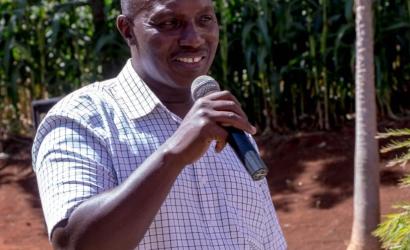Somalia
The ETC deployed a coordinator to Somalia on 17 August, less than a week after the IASC humanitarian system-wide scale up protocols were activated in response to the ever-worsening drought. Over the course of a one-month mission, the ETC coordinator assessed the ICT requirements to support the scale-up of activities and on 18 September, the ETC was activated to enhance and expand common ICT services for the humanitarian community. Since then, an operational plan was developed and collaboration with key local stakeholders initiated. However, due to a lack of funding, the cluster is unable to continue its engagement and put on hold the implementation of its planned services in Somalia on 30 October. WFP as the local ETC lead and global ETC lead agency, continues to advocate for funding and ensure that critical ICT gaps are covered.
ICT Profile
Somali Disaster Management Agency (SoDMA), Ministry of Humanitarian Affairs and Disaster Management
Ministry of Communications and Technology
National Communications Authority
15.89 million
Despite the instability that continues to affect the country, the telecoms market functions relatively well. Seven mobile network operators, several of which also offer fixed-line and internet services, provide coverage across the country. Thanks to the competitive market, tariffs are among the lowest in Africa and tele-density (the local availability of telephone lines) is higher than in neighbouring countries.
There are four major mobile phone operators providing services Somalia: Hormuud in South and Central Somalia; Golis in North East (Puntland); Telesom in Somaliland and Somtel countrywide. Data capacity is very good and 4G services are offered in Mogadishu plus major cities. Of Somalia’s 12 million citizens, about 90% has a mobile phone. There is an agreement between Hormuud, Golis and Telesom for national roaming, i.e. a user with a Hormuud SIM can use the mobile phone also in the areas where the two other providers are covering.
There is no restriction in applying for a SIM card from any one of the mobile providers in Somalia. However limitations come with the selection of the type of the services the client prescribes. There are post-paid and pre-paid services. A pre-paid application is not difficult to obtain unlike post-paid.
In 2014, the country gained access to international submarine fibre optic cables, (including the Djibouti Africa Regional Express (DARE) and the Gulf to Africa (G2A) cable system. There are also fibre-optic broadband links connecting Somalia across the Kenyan border and linking to directly into Hormuud Telecom's network.
Nonetheless it the country’s telecoms infrastructure has suffered from a lack of investment and militant groups have occasionally forced the closure of internet services in parts of the country.
Some progress has been made on the lack of central government guidance in the sector with the passing of the National Communications Law in 2017, aimed at setting a legal and regulatory framework for the sector and establishing a National Communications Agency.
In terms of Security Communications Systems (SCS) for humanitarians, UNDSS has deployed an analogue VHF repeater network across Somalia. UNSOS has deployed a comprehensive Tetra network in Somalia, which agencies can access at a cost. There are some locations where there is no VHF network available, only Tetra. SatPhones are a key component of the SCS in Somalia and are a mandatory communications tool for field missions.
Somali shilling (Sh.so)
1
56
0.75
2.5
39%
| The National Communications Act of 2017 established the National Communications Authority (NCA), Somalia's telecommunications regulator. The NCA is responsible for facilitating the development of the ICT sector, enabling and ensuring fair and sustainable competition, carrier interconnection, transparency in the implementation of the Communication Law, protecting consumer interest and rights, and maintaining its role as an independent regulator. The NCA has developed a number of regulations to implement the Act, including the Numbering Regulation and Unified Licensing Framework. |
| The Somali Civil Aviation Authority (SCAA), the Somali agency responsible for drone safety, has not codified drone use regulations in Somalia. As drone operations are not regulated in Somalia, it is recommended to contact the SCAA regard drone usage and to follow the International Civil Aviation Organization (ICAO) recommendations. |
| The Tampere Convention on the Provision of Telecommunication Resources for Disaster Mitigation and Relief Operations came into force 8 January 2005, following the ratification by 30 countries. The Tampere Convention calls on States to facilitate the provision of prompt telecommunication assistance to mitigate the impact of a disaster, and covers both the installation and operation of reliable, flexible telecommunication services. Regulatory barriers that impede the use of telecommunication resources for disasters are waived. These barriers include the licensing requirements to use allocated frequencies, restrictions on the import of telecommunication equipment, as well as limitations on the movement of humanitarian teams. |
